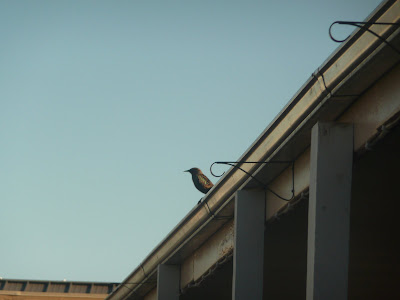If you'll be in Prague in the coming months, don't miss the big new exhibition that just opened at Prague castle on the legendary sage and scholar Rabbi Judah ben Bezalel Loew. Called The Path of Life, the exhibition is part of events celebrating the 400th anniversary of Rabbi Loew's death. It presents both the historical figure of the Rabbi, who was known as the Maharal, as well as the legends and legacy surrounding him -- he is renowned in books and folklore as the creator of the Golem.
The idea of Rabbi Loew as the personification of the mystery of the ghetto, a miracle worker, mathematician and creator of an artificial being may not be historically grounded but it has provided immense inspiration for literature, drama and art. “The historical and the imaginary Rabbi Loew both have a right to exist, but there is a cavernous divide between the historical image of this figure and the way he is mainly seen today,” says the exhibition curator Alexandr Putík, a researcher at the Jewish Museum. “This fact is of such importance that it serves as the basic concept for the whole exhibition, which comprises two parts. The first part focuses on the historical Rabbi Loew and the authentic traditions connected with him, while the second part looks at the Rabbi Loew’s legacy and the origin of the legends that are linked to his name.”According to the press release about the exhibition:
Among the most important items on display are the writings of Rabbi Loew together with official registers and records associated with him. One of the unique items is a document from the State Archives in Vienna dating from 1597 that was signed by this Jewish scholar, whose fame spread following his meeting with Emperor Rudolf II at Prague Castle. Another rare exhibit is a table bell that was made from an alloy of seven metals on the basis of kabbalistic instructions and belonged to Rudolf II; this is on loan from the Kunsthistorisches Museum in Vienna.The exhibition also showcases a number of items that were directly or indirectly connected with Rabbi Loew. These include a replica of the tombstone of his relative Lev the Elder from 1540, the original of which is in Prague’s Old Jewish Cemetery, the chair that the rabbi is said to have sat on during religious services at the Old-New Synagogue, and a Kiddush cup that – according to oral tradition – belonged to Rabbi Loew. The original tombstone and chair obviously could not be put on view at the exhibition, but they can be seen on a tour of the Jewish Museum in Prague.
Rabbi Loew’s work stands out for its complexity and depth – he dealt with not only Torah and Talmud exegesis and religious law, but also with mystical theology and education, and he had a major influence on Hasidism and modern religious Zionism. “Ironically, the general public now knows Judah ben Bezalel mainly due to the golem legend, with which he was not associated until the nineteenth century. This legend is also featured in the exhibition,” says the other curator of the exhibition Arno Pařík. On view at the Imperial Stables are Sippurim [Hebrew “Tales”] – texts by German romantics that were published in Prague in 1847 and raised broader awareness of Rabbi Loew and his golem – and literary works by Alois Jirásek, Josef Svátek and Adolf Wenig that dealt with the golem legends.
Legends about Rabbi Loew and his golem spread most extensively, however, at the beginning of the twentieth century, which is why the exhibition showcases a number of literary works on this theme by such authors as Yudel Rosenberg, Gustav Meyrink and Chaim Bloch. Rabbi Loew and the golem were depicted in art first by Mikoláš Aleš and then by Hugo Steiner-Prag, among other artists. A monument to Rabbi Loew was made by the sculptor Ladislav Šaloun for the front of Prague’s Town Hall; the model for this – which is in the collections of the Jewish Museum in Prague – is also on view at the exhibition. A play about Rabbi Loew and his golem was also performed at the Liberated Theatre. The greatest success, however, was with the film versions of these legends by Paul Wegener, Julian Duviviér and Martin Frič (in the film The Emperor’s Baker and the Golem). Selected excerpts from these films will be screened at the exhibition.
Path of Life also traces the development of the Prague ghetto and the Jewish cemetery during the lifetime of Rabbi Loew. Thanks to the City of Prague Museum and KIT digital Czech a. s., it is possible to see a 3D depiction of the most important buildings of Prague’s Jewish Town, as rendered in an 18th century model by Antonín Langweil. In addition to Rabbi Loew’s house, this shows the major public buildings and the tombstones of Rabbi Loew and other prominent figures from the late 16th and early 17th centuries.


















































